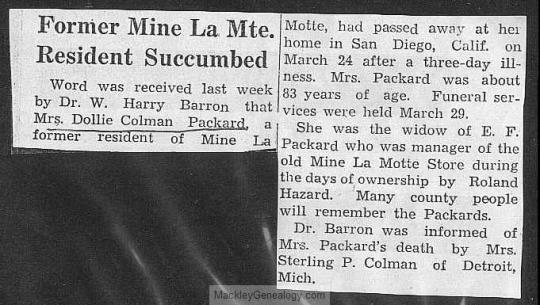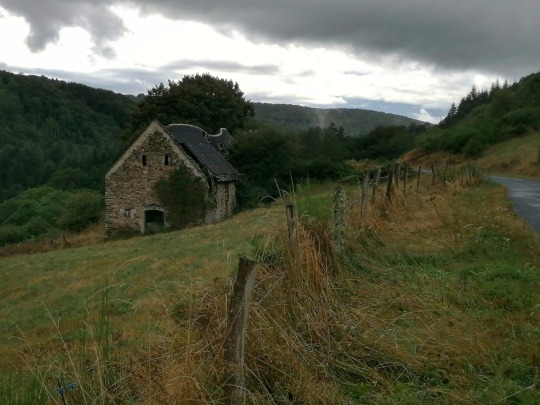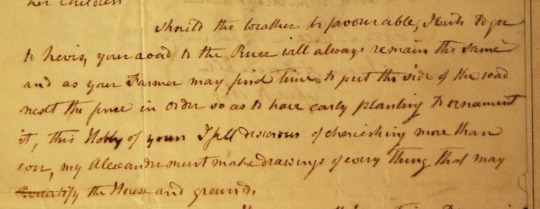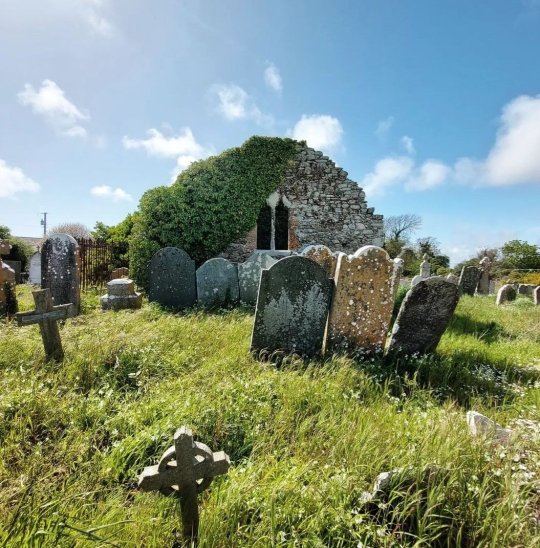#the grange
Text
Saltburn is Wuthering Heights
Oliver= Heathcliff
Felix= Catherine
Venetia= Isabella
Farleigh= Hindley AND the younger generation who survive to the end of the book like Hareton.
The grave scene! Oliver is Heathcliff. I just don't understand why no one else has pointed this out.
#saltburn#gothic romance#wuthering heights#emerald fennell#hire me please#the grange#emily bronte#there could be a sequel#Farleigh or his kid would come back#Oliver would be crazy with ghosts
5 notes
·
View notes
Text
I really wish The Grange would have historical reactors,, which yes, I know doing all eight kids would be extreme especially because it's not that big of a house (Or at least they haven't actually fixed up too many rooms for showing). But still, at least having reactors for Elizabeth and Hamilton would be nice
#At least do Philip too#amrev#american history#american revolution#the grange#the Hamilton grange#rambles
35 notes
·
View notes
Photo

MWW Artwork of the Day (3/3/23)
Mabel Pryde Nicholson (British, 1871–1918)
The Grange, Rottingdean (1911)
Oil on canvas, 91.5 x 72.5 cm.
National Gallery of Scotland, Edinburgh
Pryde grew up in the centre of Edinburgh’s artistic, literary and theatrical circles. This painting depicts Pryde's children Nancy (1899-1977) and Kit (1904-1948), who grew up to be a designer and an architect. Nancy is shown seated and in profile, whilst Kit is seen through a door, wearing a Glengarry cap and standing in the black-and-white tiled hall. Behind him a door opens on to the dining room. The complex composition, at once interior and double-portrait, is lit from several sources. Shadow and reflection play a part in creating an atmosphere of contemplation and anticipation. Pryde frequently painted her four children and insisted on paying them a small fee to model.
11 notes
·
View notes
Text
Those dang Packards in Missouri

From "Homer Badman," s6, ep 9 of the Simpsons.
Missouri, as it turns out, is Packed with Packards. As we wrote about on this blog before, they established their roots within the state. After all, there is a Packard cemetery in Clinton County, Missouri. In order to follow up on this, I looked at a number of varying sources.
Family Search as a number of databases on the state of Missouri. Within their “Missouri, Death Records, 1834-1910” collection there were 66 results for the surname of Packard. As for their “Missouri, Birth Records, 1847-1910” collection there were 32 results for the surname. Then within their “Missouri, Marriage Records, 1805-2002” there were 1,208 results for the surname and within their “Missouri Marriages, 1750-1920” collection there were 1,290 results. As for the Missouri Archives, there are 56 results for the Packard surname in their “Missouri Death Certificates, 1910 – 1966” database.

Results from this index for the Packards are above.
Note: This was originally posted on May 11, 2018 on the main Packed with Packards WordPress blog (it can also be found on the Wayback Machine here). My research is still ongoing, so some conclusions in this piece may change in the future.
Beyond this, a listing of deaths in Missouri listed two Packards: Sarah Isabell dying in 1952 and John Henry dying at an unknown date. Obituaries from the website of Mackley Genealogy also reprinted the obit of a Missouri Packard, which is as follows:

Further research showed no results for the Packards here, here, or here. Even so, there may be results within this collection and are definitely ones here.
Chapman Brothers's 1893 book, Portrait and Biographical Record of Buchanan and Clinton Counties, Missouri: Containing Biographical Sketches of Prominent and Representative Citizens, Together with Biographies and Portraits of All the Presidents of the United States has a bit about the Packards here and there. The book notes that:
A Joseph L. Packard, living in St. Joseph Mo was born in 1836 in Springfield, MA, went into the railroad business and married a woman named Leslie Colt on Dec 23, 1875 (p. 319)
A C.E. (Charles Edward undoubtedly) Packard is the cashier of the farmers bank in Cameron, Missouri was born in Hampshire, Massachusetts on Mar 13, 1838, spending his boyhood on a farm there before becoming a teacher in Ohio, coming to Missouri to work as a telegraph operator and marrying a woman named Araminta Utter in 1867. It notes that C.E. and Araminta had seven children, six of which are living: William, Clark, Eva, Martha, Bessie, and Laura (p. 390, 393). I am glad he has an entry in this book since his one of my ancestors, through my Packard lineage! Later a company named "C.E. Packard & Co" is mentioned, perhaps a company he once created (p. 459)
The same goes for the National Historical Company's 1881 book, The History of Clinton County, Missouri: Containing a History of the County, Its Cities, Towns, Etc., Biographical Sketches of Its Citizens, Clinton County in the Late War, General and Local Statistics, Portraits of Early Settlers and Prominent Men, History of Missouri, Map of Clinton County, Etc., Etc. This book has sixteen results for the name Packard. Some pages, like page 257, talk about a company run by one R.C. (Russell Clifford likely) Packard whereas others, like page 108, talk about an O.C. (Ossmus Chalmer) Packard born in Hampshire Co, Massachusetts in 1835 becoming a carpenter, living in Mendota, Illinois then coming to Cameron, Missouri, becoming a dairy farmer and marrying a woman named Sophia Dean on Apr 2, 1863. Both R.C. and O.C. are those from my Packard family lineage. Another person from that lineage profiled in the book is C.E. (Charles E.) Packard, on the following page (109), basically saying the same as what was noted in the 1892 Chapman Brothers Book described earlier in this article. Additionally, there are mentions of "C.E. Packard & Co" (p 264), calling C.E. a capitalist who lives in a "brick business home" (p 284, 286), a cemetery laid out by Charles Packard a mile-and-half southeast of Cameron, MO (the Packard Cemetery perhaps?, p 251), Charles as a railroad man (p 337), the first two-story residence constructed on South Walnut Street by R.C. Packard in 1866 (p 256), E.C. Packard as a secretary in the Cameron chapter of the Grange (p 277), and Charles E. Packard the member of the First Congregational Church in Cameron starting in 1865 (p 265-266). Also a Packard for the Grange ran to be a representative in Clinton County MO (p 406), a Mary Packard was mentioned as marrying a O.B. Lingle in 1866 (p 100), and a C.I (Charles I) ford, a dairyman and farmer was noted as marrying Miss Martha Packard (in my Packard lineage) in December 1843 and fathering eleven children with her (p 87).
That's all on the Packards in Missouri. Look forward to next week's post determining if Samuel was a constable or a tavern keeper, and if those family genealogies saying this are rotten liars or not!
© 2018-2022 Burkely Hermann. All rights reserved.
#missouri#packards#genealogy#family history#genealogy research#lineage#ancestry#the grange#cameron missouri#cameron mo#weird names#clinton county#missouri state archives#archives
0 notes
Text
“It is a sacrilege, a crime, a villainy to hold that such a marriage is binding. I say that these monstrous laws of yours will bring a curse upon the land—Heaven will not let such wickedness endure.”
Tbh I don’t think Arthur Conan Doyle gets enough credit for featuring domestic abuse survivors in his works, to the point of overlooking or justifying murder, in a time when it was seen as a Private Matter that outsiders shouldn’t be nosey about. Giving voice to a woman to call out the lack of a woman’s rights to be freed from an abusive marriage is a pretty big deal, and Holmes validating and supporting it each and every time is a purposeful authorial choice.
Others have posted about how it’s very likely that, as a doctor, ACD would be privy to all sorts of ugly secrets from “those isolated country manors” as described in The Copper Beeches—but even if he weren’t, there’s certainly a statement being made via his stories.
#letters from watson#the abbey grange#ACD has his ugly sides too#but the near-comic level of hatred holmes fans have of him dismiss his role in why the stories are GOOD
3K notes
·
View notes
Text

Illustration by Alfred Pearse for 'The Horror of Studley Grange'
1K notes
·
View notes
Photo

Monkwood Court, EH9
#Monkwood Court#The Grange#Edinburgh#Scotland#United Kingdom#Street Photography#Photographers on Tumblr#2021
1 note
·
View note
Text

The weather wasn't ideal for taking photos but for the people who asked on my last post—here's the surprised barn who always seems to gasp in shock when she sees you drive by!
#(oui elle a la tête un peu cabossée)#also known as the Dormouse Barn thanks to me#i used to have a dormouse trap in the kitchen and whenever i caught a dormouse I'd go and release it in there#you're supposed to release them far away from your house or else they find their way back#so i turned this derelict barn into dormouse city#now some locals have started calling it La Grange aux Loirs too#which makes me feel like an influencer
1K notes
·
View notes
Text


scaring the hell out of his new watson
#the abbey grange#granada holmes#jeremy brett#edward hardwicke#sherlock holmes#watson#gifs#my posts#queue
405 notes
·
View notes
Text
WATSON: I've been dropping subtle hints to Holmes that I'm attracted to men.
ALSO WATSON: "There was a sound upon the stairs, and our door was opened to admit as fine a specimen of manhood as ever passed through it. He was a very tall young man, golden-moustached, blue-eyed, with a skin which had been burned by tropical suns, and a springy step which showed that the huge frame was as active as it was strong."
464 notes
·
View notes
Text

Library in the Paris home of Jacques Grange.
#jacques grange#paris#apartment#interior#interiors#interior decorating#interior design#interior decor inspiration#art#design#home furnishings#furnishing#furniture design#library#study
342 notes
·
View notes
Text

“Should the weather be favourable, I wish to go to Nevis, your road to the River will always remain the same and as your farmer may find time to put the side of the road next the fence in order so as to have early planting to ornament it, this Hobby of yours I feel desirous of cherishing more than love, my Alexander must make drawings of every thing that may qualify the House and ground.”
(source — Elizabeth Hamilton to James Alexander Hamilton, [April 12, 1869])
Hamilton built his family and himself a house located in upper Manhattan, in 1802. Hamilton named the estate The Grange, after his grandfather's own holdings in Scotland. It was a two-story frame in a Federal style house. The drawings Elizabeth refers to are here.

The Hamilton Grange, c. 1872
Similarly, in which Elizabeth is referring to in the letter; James A. Hamilton built his family and himself a house at Irvington, New York, in 1835. He named it Nevis, after the birthplace of his father. The original house was square, in the style of a Greek temple. In 1851, he added a south wing. And later in 1884, Alexander Hamilton - James's son - added a north wing to the house to balance out.

Nevis estate, c. 1850
The parallels are exceedingly clear, and it's reasonable to assess that James was trying to replicate his father's dream. Additionally, Hamilton also called the Grange his “Hobby”;
“Wife Children and hobby are the only things upon which I have permitted my thoughts to run. As often as I write, you may expect to hear something about the latter.
Don’t lose any opportunity which may offer of ploughing up the new garden spot and let the waggon make a tour of the ground lately purchased3 to collect the dung upon it to be scattered over that spot.”
(source — Alexander Hamilton to Elizabeth Hamilton, [1803])
#amrev#american history#alexander hamilton#historical alexander hamilton#james alexander hamilton#elizabeth schuyler#elizabeth hamilton#history#letters#hamilchildren#hamilton family#hamilton kids#hamilkids#hamilton children#the grange#cicero's history lessons
16 notes
·
View notes
Text
He looks so uncomfortable 🥺
But some truly remarkable acting from Jeremy here. Holmes isn't used to receiving gratitude in such an intimate way, not even wanting to touch her hand for very long. It's almost as though we see Holmes try to calibrate what he should do in real time, his arm going around to hold her but stopping himself. We see him pry her off gently, and he then realises he's holding this young lady's hand. So he proceeds to flick it away. With a mute apology, he distances himself from her, preferring to stand at the window and have his back to his guests. It all happens very quickly.
I'm not entirely sure why Holmes reacts this way, but it's very characteristic of him.
#sherlock holmes#the return of sherlock holmes#the abbey grange#sir arthur conan doyle#arthur conan doyle#conan doyle#acd#granada television#granada holmes#jeremy brett#ramble#rambles#thought#thoughts#character analysis#analysis#video
380 notes
·
View notes
Text

"Yüreğini hapseden karanlıkları, hangi türden bir güneşin aydınlatabileceğini bilmiyordu."
65 notes
·
View notes
Text

📍Medieval church ruins, Grange, Kilmore, Co Wexford 🇮🇪
📸 @Wexfordchurches
#dark academia#light academia#classical#academia aesthetic#escapism#academia#books and libraries#classic literature#books#architecture#place#photography#travel#grange#kilmore#co Wexford#ireland#medieval#church#ruins#royal core#cottage core#aesthetic#academic#mood#vibe#tumblr#macabre#gravestones#graves
144 notes
·
View notes
Text
“No, I couldn't do it, Watson,” said he, as we re-entered our room. “Once that warrant was made out nothing on earth would save him. Once or twice in my career I feel that I have done more real harm by my discovery of the criminal than ever he had done by his crime. I have learned caution now, and I had rather play tricks with the law of England than with my own conscience.”
PLAY THOSE TRICKS WITH THE FUCKING LAW OF ENGLAND!!!!
I love that Holmes’ great regrets involve SOLVING crimes. You’d think that someone involved in crime investigation for so long would end up with a “tough on crime” mentality, but Holmes has learned to prioritize good over the concept of legality or even justice. And he knows all too well that the law makes no such distinction.
150 notes
·
View notes